LIFE on the EDGE
Jim Al-Khalili & Johnjoe McFadden, Surrey University (2014)
This book is important in trying to bring a serious discussion of quantum biology to a lay audience.
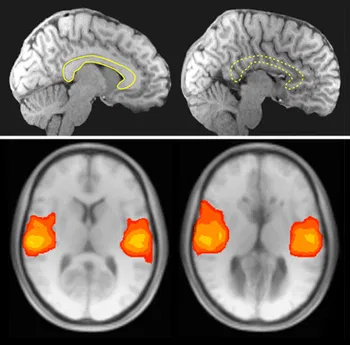
Starting from an apparently off-beat discovery of quantum coherence in low-temperature photosynthetic microbes in 2007, quantum coherence is emerging as a general principle of biological systems. The 2007 discovery of quantum coherence in microbes at low temperatures quickly extended to organisms at room temperatures and to multicellular plants. In this book, the authors extend the discussion to animal life, including quantum tunnelling in enzymes and the quantum entanglement based avian compass in European robins. It becomes apparent that rather then being an occasional oddity, quantum coherence has a general role in raising the efficiency of biological processing, and it may even allow for energy efficiency above the limit proposed by Carnot.
In photosynthesis, the cytoskeleton, which is a cell's support structure, and also the transporter of biomolecules within the cell, is connected to the chloroplasts that are central to the process of photosynthesis. The chloroplasts contain structures known as thylakoids that are filled with chlorphyll molecules. The surface of the thylakoids has antennae formed by chromophore light-harvesting molecules, of which chlorophyl is the best example. These have the function of capturing light
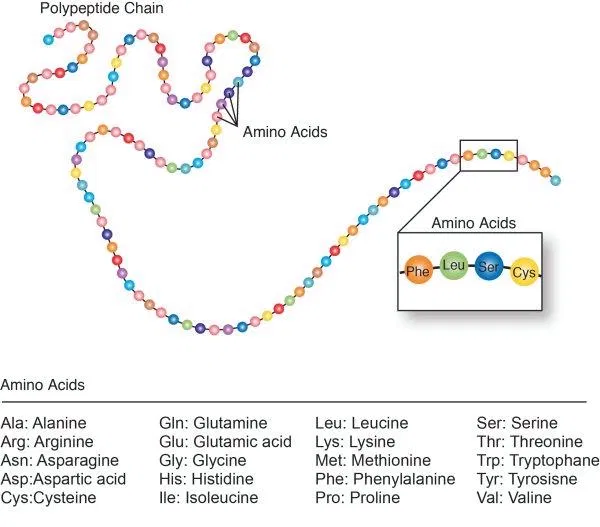 The chloroplasts of photosynthetic organisms are filled with chlorophyll pigment molecules that convert light photons into excitons that then pass amongst the chlorophyll molecules on their way into the organism's reaction centre. The excitons are wave-like superpositions that can explore different possible paths. Coherence or 'quantum beating' is detected during this transfer process, and the quantum walk with its choice of numerous paths makes this energy transfer more efficient than the classical random walk.
The chloroplasts of photosynthetic organisms are filled with chlorophyll pigment molecules that convert light photons into excitons that then pass amongst the chlorophyll molecules on their way into the organism's reaction centre. The excitons are wave-like superpositions that can explore different possible paths. Coherence or 'quantum beating' is detected during this transfer process, and the quantum walk with its choice of numerous paths makes this energy transfer more efficient than the classical random walk.
The chlorophyll molecule is made up of pentagonal arrays of carbon and nitrogen atoms enclosing a magnesium atom with a long tail of carbon, oxygen and hydrogen atoms. The magnesium atom's outermost electron can be easily displaced to leave a positively charged 'hole'. The positively charged 'hole' and, the now displaced, and negatively charged electron together comprise an 'exciton'. This can be viewed as a positive and negative charge acting together as an energy store. However, the opposite charges of the exciton are attracted to one another, and if they combine their energy becomes lost as heat. A plant has to transfer the energy very rapidly to a photosynthetic reaction centre, in order to prevent random wandering of the energy amongst the numerous chlorophyll molecules, which would result in substantial heat loss. In a manner similar to the transfer of energy within enzymes, energy is transferred from one chlorophyll molecule to another. This is possible because of the tight packing of the molecules
Studies of these photosynthetic systems have shown a 600 femtosecond oscillation symptomatic of quantum coherence, otherwise referred to as a 'quantum beat'. This means the exciton is not following a single random route through the chorophyll molecule, but is instead using the multiple routes allowed by quantum superposition. These multiple choices of route allow the selection of the quickest most energy-efficient route. This search strategy is sometimes called the 'quantum walk', as opposed to the less efficient classical 'random walk'. Quantum coherent energy transfer was initially discovered in photosynthetic bacteria at low temperatures, but later studies showed the process at room temperature and in plants as well as bacteria and algae.
The reaction centre is the destination for the excitons involved in photosynthetic energy transfer. In the reaction centre, the energy of the excitons is converted into chemical energy used by plants and bacteria. Photosynthetic reaction centres are equipped with a pair of chlorophyll molecules known as a special pair because they are embedded in different environments, and vibrating at slightly different frequencies. The special pair structure is ideally tuned to inhibit the use of wasteful energy routes when delivering energy to an acceptor molecule, and may allow an energy efficiency above the limit proposed by Carnot.
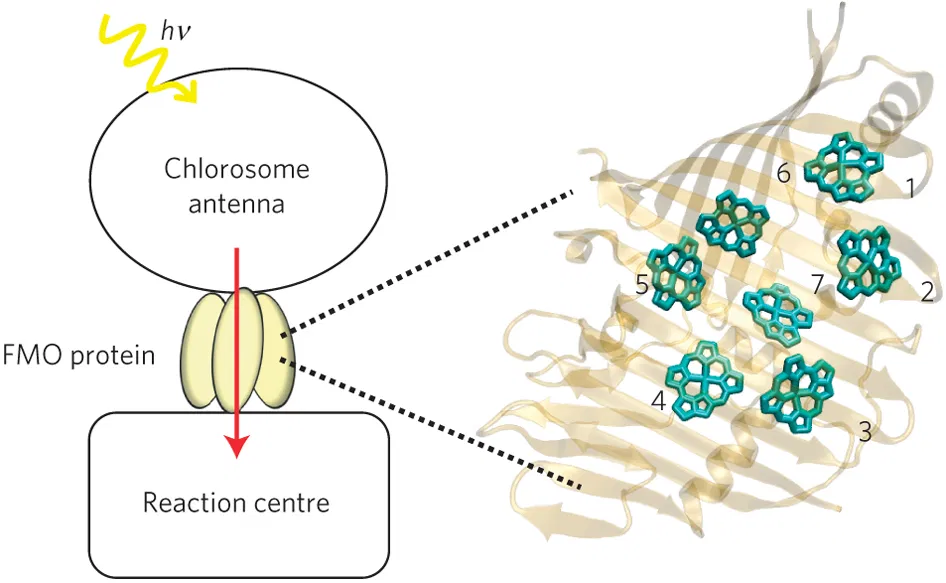
Electrons in the reaction centre are captured by the NADPH molecule, and this is involved in the manufacture of ATP, in a process similar to that found in mitochondria in animal cells. NADPH feeds electrons into a chain of enzymes that pumps protons out of the chloroplast membrane; the subsequent backward flow of the protons is used to produce ATP, thus providing the energy needs of the plant.
The process is very similar in both animals and plants demonstrating important similarities between apparently very different types of organism, with both using processes governed by quantum rules. It is apparent that the processing of both animals and plants evolved from the processing of bacteria and algae.
Recent quantum biology has thrown light on how life deals with molecular vibration or so-called noise. Molecular vibration or noise is seen to support rather than disrupt the quantum walk. Two types of molecular noise are used to support coherence; in the first place, there is low-level white noise spread across all frequencies, and derived from the jostling of all the molecules in a living cell. The second type of noise is more energetic, but limited to a small number of frequencies; this derives from the vibration of larger structures such as the chorophyll molecules along with their associated protein scaffolding. The bends and twists of the protein scaffolding are sources of vibration, particularly at certain frequencies. These more restricted vibrations have been indicated to correct quantum coherence when white or lower frequency noise threatened to produce decoherence. These two types of vibration are seen as driving quantum coherence within cells. Some research suggests that there is a 'Goldilocks' zone between aimless wandering of energy in a very cool environment, and retarded transport in a very hot environment, with the temperature inside photosynthetic organisms lying in the Goldilock's zone.
Breathing or respiration in animals involves a complex molecular process inside an organelle called the mitochondria, which appear to have evolved from bacteria that were originally independent organisms. The intricacy of the processing in mitochondria reflects the fact that they were once independent organisms. In terms of chemical complexity, respiration as performed by mitochondria is second only to photosynthesis
Carbohydrates are broken down by the body to yield sugars such as glucose that are carried by the blood stream to the individual cells. Oxygen is also delivered to the cells by the blood stream. Within the cell, electrons in the outer orbits of carbon atoms are transferred to the NADH molecule. The electrons are passed along a chain of enzymes called the respiratory chain. At each step, the electrons drop to a lower-energy state, and the difference in energy drives enzymes that pump protons out of the mitochondria, and thus create a proton gradient between the outside and the inside of the mitochondria. The energy of this drives another enzyme called ATPase which in turn makes the ATP biomolecule, the basic energy producer of cells. Respiration is essentially the transfer of electrons through a series of enzymes.
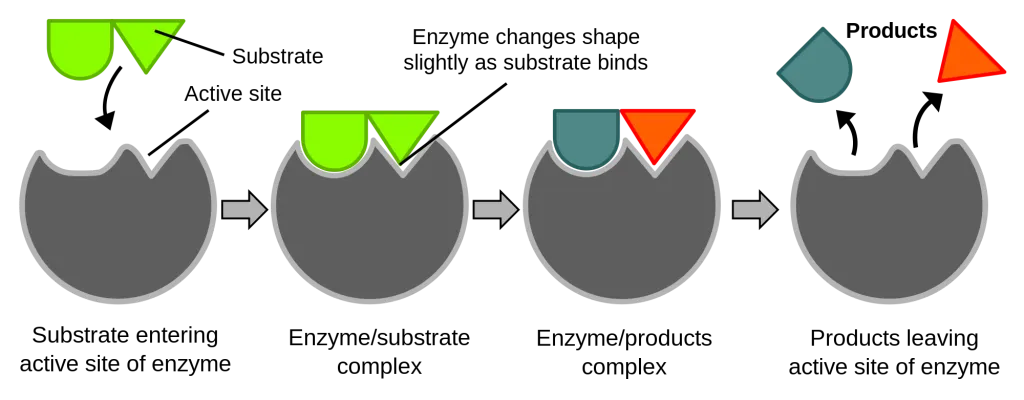
Each electron transfer in this process is across a gap of several tens of angstroms. This was previously thought to be too much for conventional electrical transfer, but it is possible with quantum tunnelling where an electron that is not energetic enough to get over the top of a barrier is nevertheless able to tunnel through the barrier. Proton as well as electron tunnelling is thought to be important in the activity of enzymes. Enzymes are not static, but vibrate, and this may serve to bring particles close enough together to allow quantum tunnelling. Enzymes are vital to life in allowing biological processes to take place quickly enough to support life, and this means that the existence of life is in fact dependent on quantum tunnelling.
The European robin and some other creatures navigate by means of magnetoreception, which is the ability to detect the Earth's magnetic field. This is very weak, and for an organism to detect it, the magnetic field must drive a chemical reaction in the organism's body.
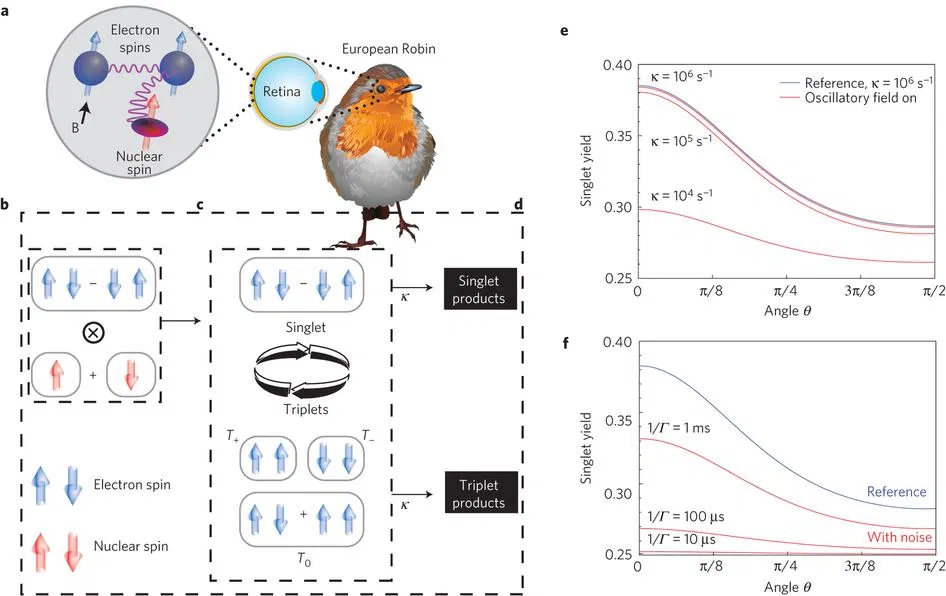
When bonds between atoms are formed by sharing electrons, these electrons are quantum entangled, and also in what is known as a spin-singlet state. A spin-singlet state means that the electrons spin in opposite direction, so that their spin cancels out. The bond between the atoms can be broken, in such a way that the there are lone electrons in the outer shells of the separated atoms. Such atoms are referred to as free radicals. However, despite the loss of the atomic bond, the entanglement of the singlet pair of electrons can persist. But although entangled, they may not remain just as a singlet pair, and it is possible for them to become a superposition of the singlet and the triplet state.
Triplet state: In the triplet state, the lone electrons of the outer shell can spin in the same direction leaving them with a net spin that can become aligned with the Earth's magnetic field. Radical pairs are unstable so a very small effect such as that of the Earth's magnetic field can decide the difference between a singlet and a triplet state.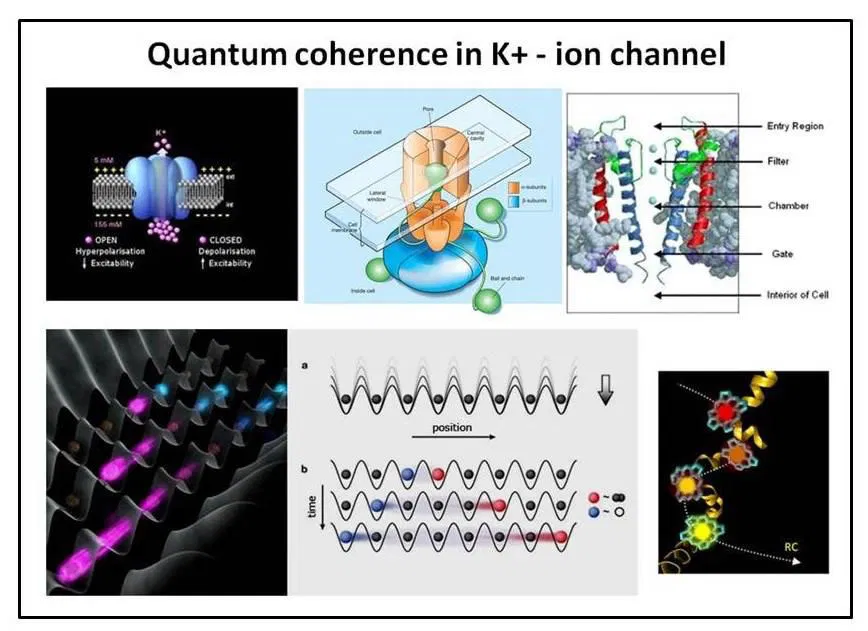 Unusually for a mainstream theorist, the author is interested in Bernroider's work on quantum features in ion channels, a study which has been the target of aggressive but uninformed attacks by the usual braying chorus claiming to detect pseudo-science. However, the author is prepared to accept the principle that quantum processes could operate in the brain. Untitled-45Bernroider and Summhammer's (2012) simulation of an ion passing through a voltage-gated channel showed that the ion was delocalised, meaning it behaves as a wave rather than a particle, during this process; moreover, this ion waves oscillates at a high frequency that transfers energy to the surrounding proteins. This transfer of energy cools the ion itself, and this helps to preserve its quantum state. The degree of cooling may determine whether sodium or potassium ions are transferred, which in turn determines the polarisation of the neural membrane.
Unusually for a mainstream theorist, the author is interested in Bernroider's work on quantum features in ion channels, a study which has been the target of aggressive but uninformed attacks by the usual braying chorus claiming to detect pseudo-science. However, the author is prepared to accept the principle that quantum processes could operate in the brain. Untitled-45Bernroider and Summhammer's (2012) simulation of an ion passing through a voltage-gated channel showed that the ion was delocalised, meaning it behaves as a wave rather than a particle, during this process; moreover, this ion waves oscillates at a high frequency that transfers energy to the surrounding proteins. This transfer of energy cools the ion itself, and this helps to preserve its quantum state. The degree of cooling may determine whether sodium or potassium ions are transferred, which in turn determines the polarisation of the neural membrane.